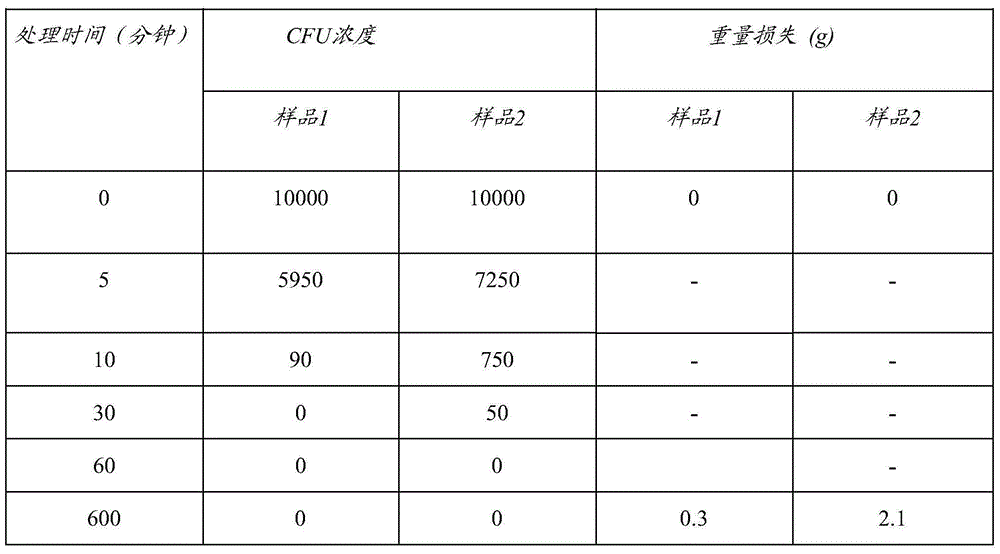Photocatalytic element for purification and disinfection of air and water and method for the production thereof
A photocatalytic and component technology, applied in chemical instruments and methods, physical/chemical process catalysts, separation methods, etc., can solve the problems of short service life of photocatalytic components, lack of pH value, and unacceptable control.
- Summary
- Abstract
- Description
- Claims
- Application Information
AI Technical Summary
Problems solved by technology
Method used
Image
Examples
Embodiment approach 1
[0042] Glass beads (0.8 mm to 1 mm portion) were poured to fill a cylindrical detachable stainless steel housing having an outer diameter of 86 mm, a width of 6 mm and a height of 420 mm. The shell was placed in an oven where sintering of the glass beads was carried out at a temperature of 15° C. above the glass softening point (about 690° C.) for 1 hour and 20 minutes. After cooling to room temperature, the housing was disassembled and the resulting support in the form of a porous glass tube was removed.
[0043] The support surface was then modified by first immersing in concentrated hydrofluoric acid for 1 min, then rinsing with water, then treating with concentrated sulfuric acid for 3 min, rinsing with water, and drying in an oven at 100°C until completely dehydrated.
[0044] The aqueous suspension is made of distilled water and anatase titanium dioxide powder with a specific surface area of 350 м 2 / g and the weight percent content of titanium dioxide is 10%. Dilute...
Embodiment approach 2
[0054] Glass beads (0.8 mm to 1 mm fraction) were poured to fill a flat tube of length 60 mm, width 5 mm and height 400 mm in a detachable stainless steel housing. Further sintering, carrier surface modification and catalyst coating operations are performed in the same manner as in Embodiment Mode 1.
[0055] The completed photocatalytic element contains:
[0056] - a porous support in the form of a parallelepiped with dimensions 400 mm 60 mm 5 mm, comprising sintered glass beads with a modified surface;
[0057] - Anatase titanium dioxide powder with a specific surface area of 350m 2 / g, the dosage is 2g / component.
[0058] A reference test sample was generated in the same way, except that titanium dioxide powder was coated onto the support from a pH=4.5 suspension.
[0059] Table 2
[0060]
[0061] The samples prepared according to this embodiment (main sample No. 3, reference sample No. 4) were tested under the reaction of photocatalytic oxidation of acetone vapor...
PUM
| Property | Measurement | Unit |
|---|---|---|
| pore size | aaaaa | aaaaa |
| specific surface area | aaaaa | aaaaa |
| thickness | aaaaa | aaaaa |
Abstract
Description
Claims
Application Information
 Login to View More
Login to View More - R&D
- Intellectual Property
- Life Sciences
- Materials
- Tech Scout
- Unparalleled Data Quality
- Higher Quality Content
- 60% Fewer Hallucinations
Browse by: Latest US Patents, China's latest patents, Technical Efficacy Thesaurus, Application Domain, Technology Topic, Popular Technical Reports.
© 2025 PatSnap. All rights reserved.Legal|Privacy policy|Modern Slavery Act Transparency Statement|Sitemap|About US| Contact US: help@patsnap.com



